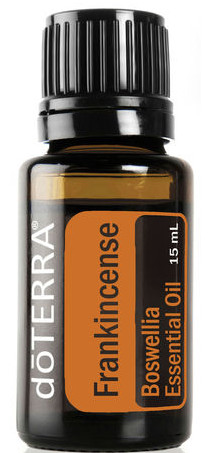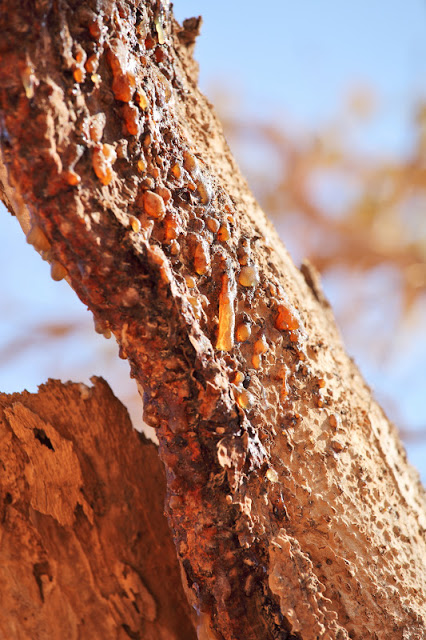By Walter Sorochan
Posted: November 02, 2017; Updated: October, 2021. Disclaimer: The information is intended as general information and should not be taken as medical advice. The products herein are not intended to diagnose, treat, cure, or prevent any disease. Please consult your doctor, especially if being used during pregnancy, before using this product. These statements have not been evaluated by the Food and Drug Administration..
What you should know about Frankincence oil

|
This article focuses on providing information about Boswellia or frankincence oil.
Claims are being made that disease symptoms may be eradicated and the whole body may be rejuvenated by the use of essential oils and their aroma. Claims are also being made that therapy is not only preventive but can also be used in the acute and chronic stages of disease. These essential oils have antibacterial properties and as alternatives for antibiotics, anti-inflammatory, anti-cancer and anti-oxidant affects.
Perhaps some background information may be in order to help you understand why frankincence oil may have healing properties. Most plants create protective barriers against their enemies. In the case of the Bosweillia tree, the trunk of the tree releases a protective gum resin that is bitter taste to insects and animals.
 Resin on tree |
 |
Boswellia is a large branching tree, grows in very arid conditions, is native to India, Northern Africa, and the Middle East. There are four main species of Boswellia which produce true frankincense. B. sacra (synonyms B. carteri and B. bhaw-dajiana), B. frereana, B. papyrifera, and B. serrata. Wiki: Bosellia
The tree trunk is tapped for its resin, which is purified and used in herbal preparations. The resin, known as frankincense, has been used in religious and cultural ceremonies since antiquity. This resin contains 17 active boswellic acids.
In recent years, the resin boswellia serrata, has gained considerable attention as a potent anti-inflammatory, anti-arthritic and analgesic agent. Kimmatkar: Life Extension: Vishal
Modern research confirms that boswellia has inflammation-fighting effects. Boswellia works differently from most conventional anti-inflammatory agents by inhibiting lipoxygenase (LOX) enzymes that are powerful contributors to inflammation and disease. Life Extension:
The implication from this information is that the oil suppresses inflammation as a symptom but may not fix the cause of the inflammation. When the affect of the oil is exhausted, then the inflammation will return. So the benefit is probably temporary.
Another resin tree extract, Boswellia sacra essential oil, also suppresses important malignant features of tumor cells. Boswellia sacra essential oil is shown to induce tumor cell cytotoxicity in drug resistant and metastasized breast cancer cases. Suhail:
Immunologist Mahmoud Suhail and scientists have observed that there is some agent within frankincense which stops cancer spreading, and which induces cancerous cells to close themselves down. Suhail is trying to find out what this is. "Cancer starts when the DNA code within the cell's nucleus becomes corrupted," he says. "It seems frankincense has a re-set function. It can tell the cell what the right DNA code should be. "Frankincense separates the 'brain' of the cancerous cell - the nucleus - from the 'body' - the cytoplasm, and closes down the nucleus to stop it reproducing corrupted DNA codes."
"There are 17 active agents in frankincense essential oil," says Dr Suhail. "We are using a process of elimination. We have cancer sufferers - for example, a horse in South Africa - and we are giving them tiny doses of each agent until we find the one which works." Suhail:
It seems that frankincense might have a potential ability to be used as an alternative natural medicine not only for chronic and inflammatory diseases but also for brain and memory disorders. Hamidpour
Most oils are extracted by distillation (steaming) or enfleurage [in grease]. Both methods are time-consuming and labor-intensive and require expert use of complicated equipment and top-quality materials. Huge amounts of plant stock are needed to distill minute quantities of oil. For example, it takes about 250 pounds of rose petals to produce one fluid ounce of essential oil. For these reasons, it is not worth attempting home extractions, and understanding the rationale behind the high cost of these oils.
While medical science is still searching for the best frankincense formula to prevent cancer, and other disorders like arthritis, auto-immune disorders and brain disorders, millions are not waiting and have begun using frankincense oil without much guidance nor knowledge of this essential oil. It is this author's mission to share as much documented information as possible about this oil and its uses.
What you should know about Boswellia before using it:
- Pure Frankincense (US) Essential Oil botanical Name is Boswellia Serrata Plant
- Color: Colorless to pale yellow clear liquid
- Strength of Aroma: Medium
- Aromatic Scent: Frankincense Essential Oil has a rich woody, earthy scent with a deeply mysterious nuance
- Some persons may be allergic to Frankincense Essential Oil. Check sensitivity test below
- Frankincence oil is steam distilled from heating the resin
- Internal use: Ingest only high quality frankincence oil; Dilute one drop in 4 fl. oz. of liquid. FDA GRAS indicates that an oil is safe for internal use.
- Topical use: Apply one to two drops to desired area. Dilute with doTERRA Fractionated Coconut Oil to minimize any skin sensitivity
- Dr. Gottenfosse discourages using a carrier oil to mix oil blends.
- Oils are absorbed very rapidly. Instead of mixing oils, use layering process, where you apply one oil, rub it in, then seconds later, apply another oil.
- non-toxic, non-irritant and non-sensitizing
Cautions: There are no known side-effects in using frankincense oil. Frankincense Essential Oil is non-toxic, non-irritant and non-sensitizing. There is lack of conformity among supposed experts about validating information about safety of oral ingestion, like placing 1 or 2 drops of oil under tongue or ingesting oil as veggie capsule. Keep away from eyes and ear canal. Avoid use during pregnancy as this oil may induce menstruation.
Benefitial claims for frankincence oil: Axe: Essentisal Oil Guide
Hamidpour Mercola: Frankincense benefits 2016- reduces Inflammation
- reduce pain
- minimizes [kills] pain
- speeds up healing process
- can potentially relieve bronchitis-related congestion
- can prevent respiratory infections and colds
- sooths the skin
- Inflammatory bowel disease
- asthma
- prevents cancer
- prevents heart disease
- prevents diabetes
- enhances memory
- facilitates fertility
- has antimicrobial effects
- inhibits arthritis
- inhibits rheumatoid arthritis (RA)
- can help break up phlegm deposits in your respiratory tract and lungs
- stimulate peristaltic motion to allow food to move properly through your intestines.
- can help prevent bad breath, cavities, toothaches, mouth sores
- regulates estrogen production in women and helps reduce the risk of post-menopause tumor or cyst formation in the uterus (uterine cancer). It also regulates the menstrual cycle of premenopausal women.
- regulates the menstrual cycle of premenopausal women
Alert: Whether the above claims really work depends on many factors, like dosage, the active agents in essential oil, the biochemistry of the use and so on. Since the prospective user probably does not have all these answers, it is impossible to validate such claims at this time.
Dr. Jay Mercola suggests Frankincense oil for certain health conditions, such as: Mercola: Frankincense benefits 2016
•Arthritis and rheumatoid arthritis (RA): Research by Cardiff University scientists found that frankincense can aid in inhibiting the production of key inflammatory molecules, helping prevent the breakdown of the cartilage tissue that causes these conditions.
In addition, Indian frankincense or boswellin, also a member of the Boswellia genus, has been found to significantly reduce inflammation in animal studies. It is actually one of my [Mercola] personal favorites, as I have seen it work well as a natural painkiller for many of my former rheumatoid arthritis (RA) patients.
• Colds and respiratory disorders: Frankincense oil can help break up phlegm deposits in your respiratory tract and lungs, and can potentially relieve bronchitis-related congestion.
•Oral health problems: The antiseptic qualities of this oil can help prevent bad breath, cavities, toothaches, mouth sores and other infections.
•Digestive disorders: Frankincense oil can help speed up the secretion of gastric juices, bile and acids, and help stimulate peristaltic motion to allow food to move properly through your intestines.
•Uterine health: Frankincense oil regulates estrogen production in women and helps reduce the risk of post-menopause tumor or cyst formation in the uterus (uterine cancer). It also regulates the menstrual cycle of premenopausal women.
Frankincence essential oil composition:
Most pure essential oil constituents can be subdivided into two distinct groups:
1. Hydrocarbons [ made up of terpenes [ monoterpenes, sesquiterpenes and diterpenes]. These inhibit the accumulation of toxins and help discharge existing toxins from the liver and kidneys. Some are anticeptic, anti-bacterial, stimulating, analgesic, anti-rheumatic, anti-tumor, cancer preventive, incesticidal. Can be soothing or irritating to tissues.
2. Sesquiterpenes: Thes are oxygenated compounds [ esters, aldehydes, ketones, alcohols, phenols and oxides]. These are found in large amounts in essential oils. Are anti-bacterial; anti-inflammatory; anticeptic; sedative reaction; sooth and calm irritated skin; able to pass blood-brain carrier; have strong aroma. Alcohols have anti-inflammatory, anti-bacterial and anti-viral ability. Can revert cells to normal activity. Monoterpense stimulates immune system and works as diuretic.
Frankincense oil can be used as:
Absorption: As with all nutrients and body supplements, one needs to know whether the essential oil is absorbed from the skin into the blood stream and deposited in the needed tissues to be effective in the healing process. Dr. Miller's article Miller: Skin absorption of essential oils 2015 provides us with some of this information:
Although the skin is a permeable barrier, it is also ipophilic [meaning “fat-loving,” or fat-soluble], as are essential oil constituents. Essential oils mix well with transporter oils, but poorly with water. Since both essential oils and the skin epidermis are relatively lipophilic, they “mix” relatively well together; consequently, essential oils are readily absorbed into the blood stream. Measurements of the oil constituents in the blood diminish in strength in 10 to 15 minutes. This suggests that these oils are absorbed by tissues, joints or organs very rapidly. Miller: Skin absorption of essential oils 2015
Bioavailability: Rubbing frankincence oil on the skin bypasses the digestive system that often destroys much, but not all, of the ingested by mouth substances. Miller's information substantiates frankincence oil being absorbed from the skin into the blood very rapidly. We can assume that most of the absorbed oil would be distributed by the lymphatic system to the cells that need it.
How often do you need to use frankincense oil?
The answer to this question is merky. But since the oil is absorbed and spread very quickly, one would assume that the user needs to replenish intake every day for a week or constantly.
Does frankincense oil really help the human body?
Animal and human research says 'yes' it does. But we do not know whether it helps all persons as every one's biochemistry is different. As Dr. Suhail pointed out earlier, we do not know the precise dosage strength of active agents in commercial essential oils that are best in preventing various disorders and diseases at this time. Commercial potions are guesses.
This author used Terra frankincense oil for about 10 days on his skin. Scaly, crusty growths on my head, neck and arms fell off after several days. Most disappeared but then tended to reappear when he stopped using the oil.
Your feedback is most appreciated: E-mail to: Author Walter Sorochan
References:
Anthoni C, Laukoetter MG, Rijcken E, et al., "Mechanisms underlying the anti-inflammatory actions of boswellic acid derivatives in experimental colitis," Am J Physiol Gastrointest Liver Physiol. 2006 Jun;290(6):G1131-7.
Aromaweb, "Essential oil skin patch testing,: Oil skin testing
Ali Babar, "Essential oils used in aromatherapy: A systemic review," Asian Pacific Journal of Tropical Biomedicine Volume 5, Issue 8, August 2015, Pages 601-611. Ali: Aromatic oils 2015
Axe Josh, The King's Cabinet, Essential OIl Dailt use Guide. Axe: Essentisal Oil Guide
Cardiff University, "A wise man's treatment for arthritis: Frankincense?" Sciencve daily, August 4, 2011. Cardiff Univ Frankincense arthritis treatment 2011
Khosravi Samani M. and others, "The effect of Frankincense in the treatment of moderate plaque-induced gingivitis: a double blinded randomized clinical trial," Daru. 2011;19(4):288-94. Khosravi: gingivitis treatrment 2011
Hamidpour Rafie, "Frankincense (乳香 Rǔ Xiāng; Boswellia Species): From the Selection of Traditional Applications to the Novel Phytotherapy for the Prevention and Treatment of Serious Diseases," J Tradit Complement Med. 2013 Oct-Dec; 3(4): 221–226. Hamidpour: treating diseases 2013
Herbal Encyclopedia, Essential Oils.
Howell Jeremy, "Frankincense: Could it be a cure for cancer?" BBC World News, February 9, 2010. Howell: Frankincence cancer cure 2010
Kimmatkar N, Thawani V, Hingorani L, Khiyani R., "Efficacy and tolerability of Boswellia serrata extract in treatment of osteoarthritis of knee--a randomized double blind placebo controlled trial," Phytomedicine. 2003 Jan; 10(1):3-7. Kimmatkar: Boswelliafeffective in knee osteoarthritis 2003
Kirste S and others, "Boswellia serrata acts on cerebral edema in patients irradiated for brain tumors: a prospective, randomized, placebo-controlled, double-blind pilot trial," Cancer. 2011 Aug 15;117(16):3788-95. Kirste: Boswellia reduced brain edema 2011
Life Extension, "Boswellia Improves Symptoms of Arthritis, Life Extension Magazine, March 2007. Life Extension: Boswellia improves arthritis 2007
Lowe Derek, "Curcumin Will Waste Your Time," Science Translational Medicine, January 12, 2017. Lowe: Curcumin ineffective 2017
Market Research Store, "Global Essential Oil Market Size & Share Expected to Reach USD 9.8 Billion by 2020." GLOBE NEWSWIRE, May 19, 2017. Market Research Store: Essential oil market
Mercola Jay, " Frankincense Oil: The 'King' of Oils," Merrcola.org, June 02, 2016. Mercola: Frankincense benefits 2016
Miller Timothy, "Dermal absorption of essential oils," Mind/Body, June 2, 2015. Miller: Skin absorption of essential oils 2015
Sandler Kristy, "How To Store Essential Oils: What you Need To Know." Sandler: Storing oils
Suhail Mahmoud., and others, "Boswellia sacra essential oil induces tumor cell-specific apoptosis and suppresses tumor aggressiveness in cultured human breast cancer cells," BMC Complement Altern Med. 2011; 11: 129. Published online 2011 Dec 15. Suhail: Boswellia reduces breast cancer growth 2011
The Serpa, "Boswellia Serrata: A Natural Pain Killer More Powerful than Ibuprofen," Natural health, May 12th, 2015. Serpa: Boswellia natural pain killer 2015
Tisserand Robert, "How To Use Essential Oils." Tisserand: how to use oils
Vishal Amar A. and others, "A Double Blind, Randomized, Placebo Controlled Clinical Study Evaluates the Early Efficacy of Aflapin® in Subjects with Osteoarthritis of Knee," Int J Med Sci., October 12, 2011; 8(7): 615–622. Vishal: Boswellia effective arthritis therapy 2011
Weil Andrew, "Boswellia." Weil: Boswelia benefits
Wikipedia,"Boswellia." Wiki: Bosellia